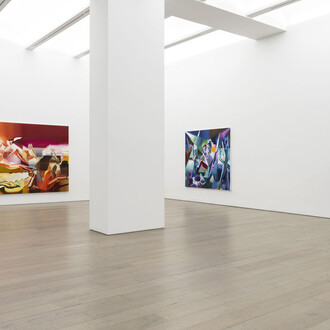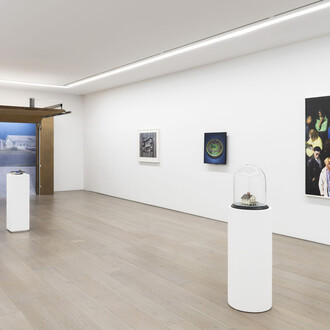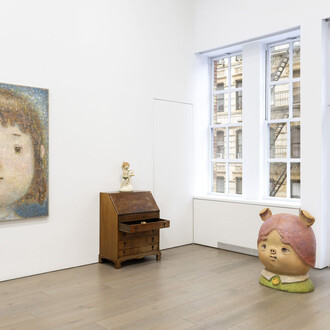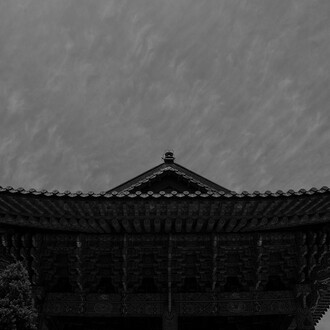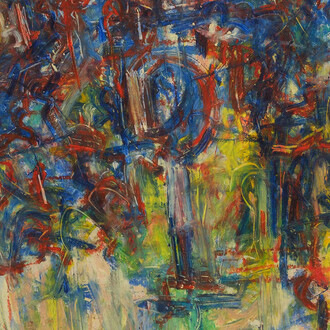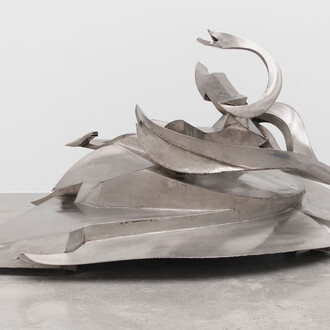Perrotin New York is pleased to present Power line, an exhibition of works by the Yale School of Art Painting and Printmaking Graduate Class of 2025. Through painting, sculpture, or installation, these artists share a deep engagement with materiality, memory, identity, and transformation. The exhibition marks Perrotin's third collaboration with Yale School of Art, following an online presentation in 2020 and at our New York gallery in 2023.
At the end of Plato’s Republic, poets and painters are banished from the perfect state. Masters of mimesis, artists, whether they use words or “colors and figures,” are condemned for being “mere imitators.” They do not seek reality; rather, they delight in its passing appearances. As if holding up a magic mirror, they multiply false images and illusory reflections of the world, leading us astray from reason and truth.
Art must be kept in order because it can express such a powerful likeness, a fiction of how things are or could be. But Plato was also a poet. He invents a fantasy of the ideal society, along with its light and shadows, rules and hierarchies, scenes and myths. His fabled philosophical dialogues, in their ever-renewable questioning, enact an original poetics. They inquire into making by giving shape to the continual unfolding of the imagination.
The artists in this exhibition of the Yale School of Art’s MFA Program in Painting and Printmaking are not, and arguably never have been, in pursuit of the classic painterly task of depiction or deception. Many of their practices turn away from inherited models and systems of aesthetic value. Instead, they create their own distinctive poetics to ask what art can do, taking what is readily at hand to explore the essential mutability of their materials, their desires, and their perceptions.
Paint and canvas are present here. So is trash, steel, soil, wood, wax, glitter, plastic, linoleum, watercolor, embroidery, clay, architectural supports and ornamental motifs, digital screenshots, props for ritual, and other barely noticeable bits and imprints of daily detritus. Through both highly calibrated and purely accidental processes, these mixed media and matter have been molded and burnt, dyed and scattered, silkscreened, torn, cut, layered, compressed, and repurposed until emerging, almost entirely, as something else.
Ways of seeing and knowing have been similarly tested to alter or intensify experience. Forms conflagrate and fade while observed outdoors, in the dark, at night; persistent symbols are discovered in graphite dream drawings; and new tools roughly devised to extend the textural sweep of a gesture. A landscape might be of a sensation; a still life a memory carefully arranged; or a portrait a story told through scale and abstraction. Confession and lies compose the same, unresolved plane; patterns repeat into shaded hues of doubt and depth. Painting questions itself.
The works of these artists start with the world as is. They then play adventurously in that precise space between what a thing is, in this one, and what it could be, in another. The other worlds that they imagine—their varied surfaces, ineffable colors, figures wavering in two dimensions—exist nowhere but in the unexpected lines of feeling, the relations of response and recognition, these works may open within us. This is a place of vital, if partial, freedom. It is where the self and the social overlap, and where art’s true powers of connection, not copying, begin.
(Jennifer Pranolo)






